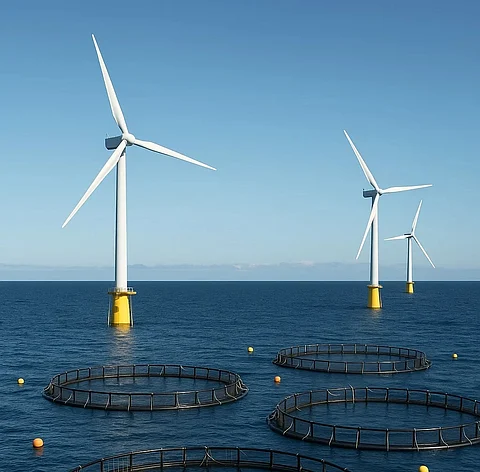

Emerging industries of the blue economy have high development potential in Spanish waters.
Carlos Vinicius
A team of researchers from the Environmental Hydraulics Institute of the University of Cantabria (IHCantabria) has studied the potential use of floating offshore wind and aquaculture in marine environments.
This study outlines the opportunities and challenges that this integration could offer in the Spanish Exclusive Economic Zone (EEZ). It is part of the ACUFLOT project, supported by the Biodiversity Foundation of the Ministry for Ecological Transition and Demographic Challenge of Spain and IHCantabria.
In addition, representatives from the energy and aquaculture sectors have been consulted, expressing a "notable" interest in this shared-use model to achieve operational and economic synergies.
The researchers have identified three stages of evaluation to develop public policies: technical analysis, consultation with the involved sectors, and SWOT analysis (Strengths, Weaknesses, Opportunities, and Threats).
The initial conclusions reveal two distinct zones: high-energy areas in open seas, which are more suitable for floating wind energy, and more sheltered or protected areas, favorable for aquaculture.
However, the study warns of structural obstacles that hinder the implementation of joint initiatives. For example, regulatory fragmentation, the lack of specifically designated areas for multi-use, and uncertainties regarding environmental impact.
For these reasons, IHCantabria proposes implementing pilot projects to test the real viability of these initiatives in the areas most technically suitable.
The development of specific regulatory frameworks could streamline procedures and incorporate multi-use zones into Spain's maritime spatial planning (POEM) plans.
Lastly, it recommends continuing to study socio-environmental impacts to mitigate uncertainties and help decision-making. All of this will help achieve a more efficient and sustainable blue economy.
